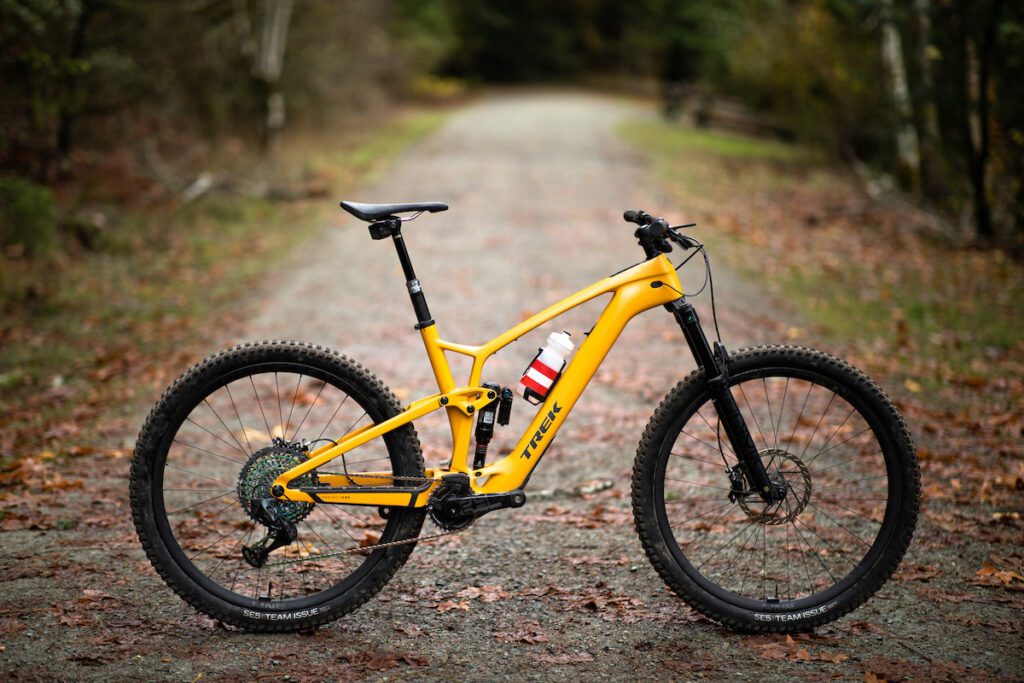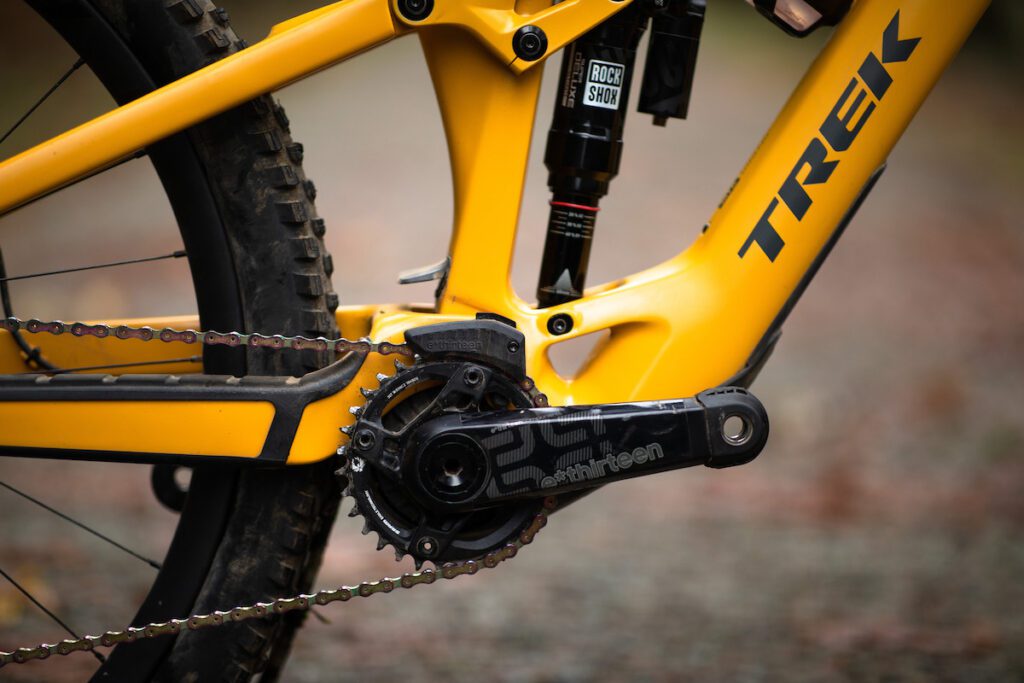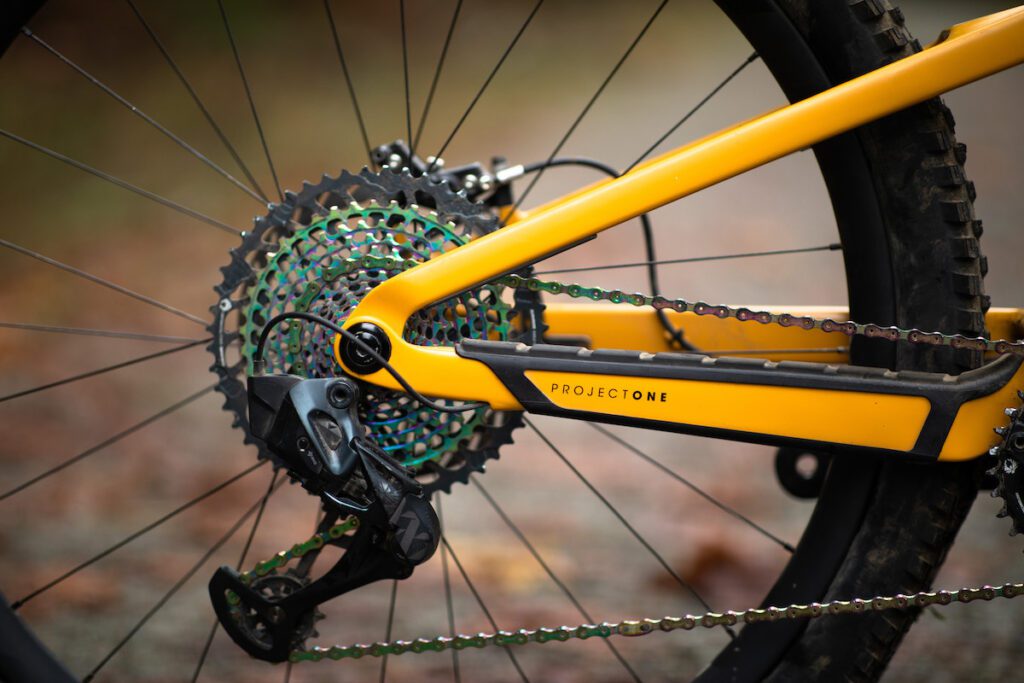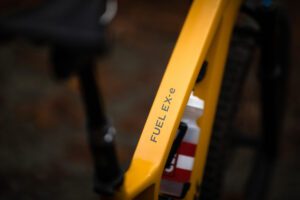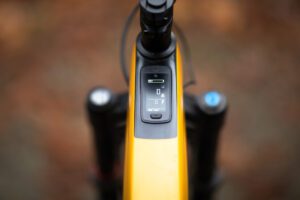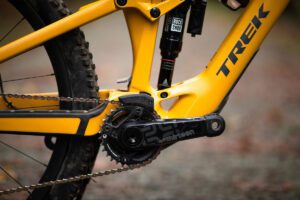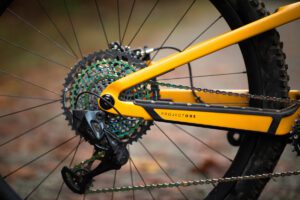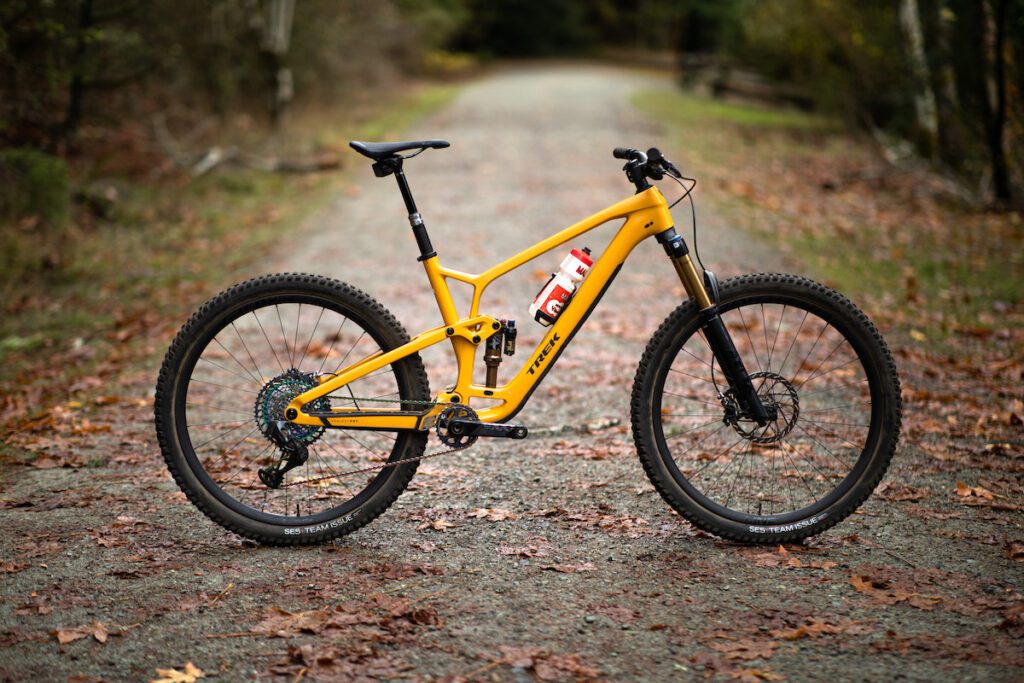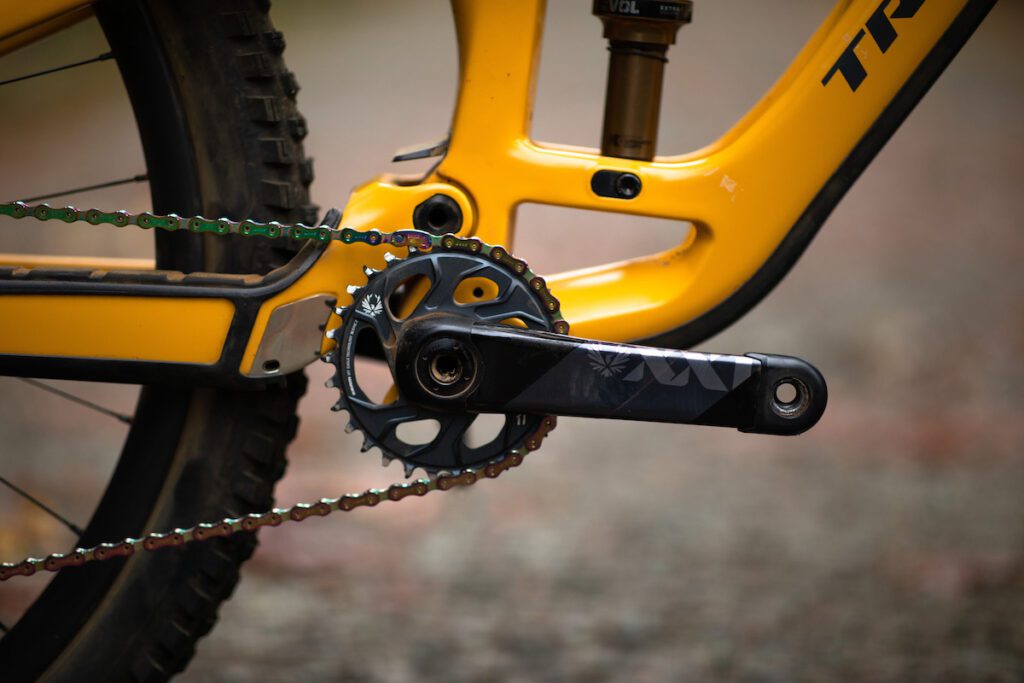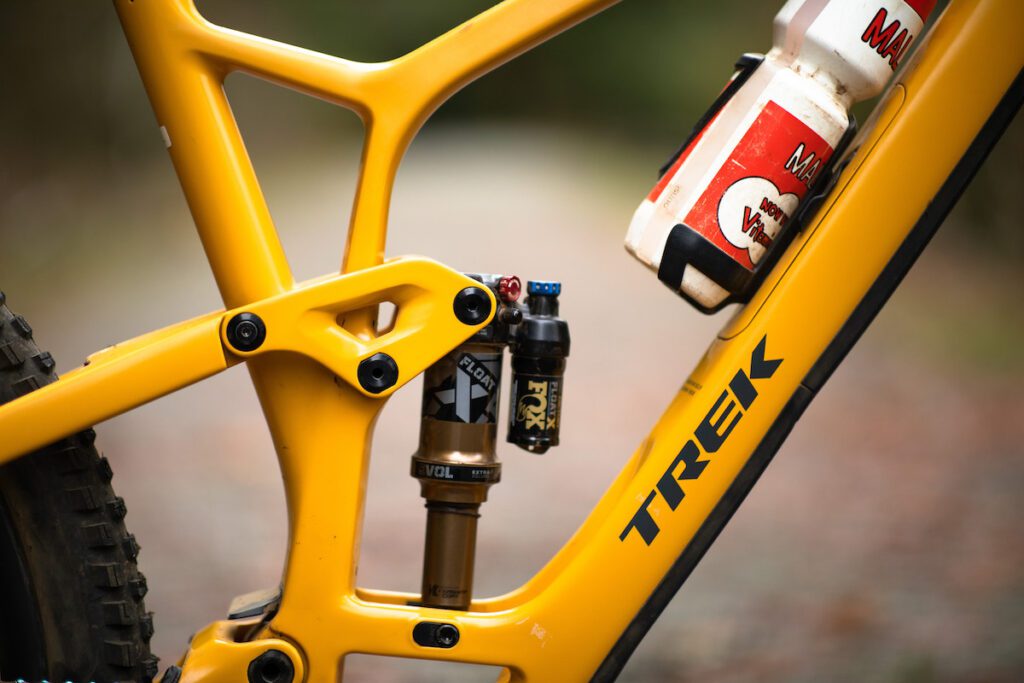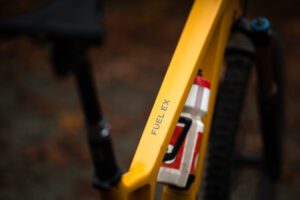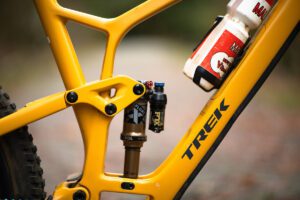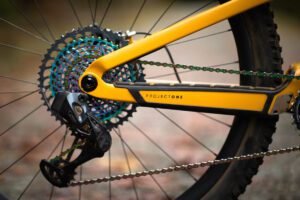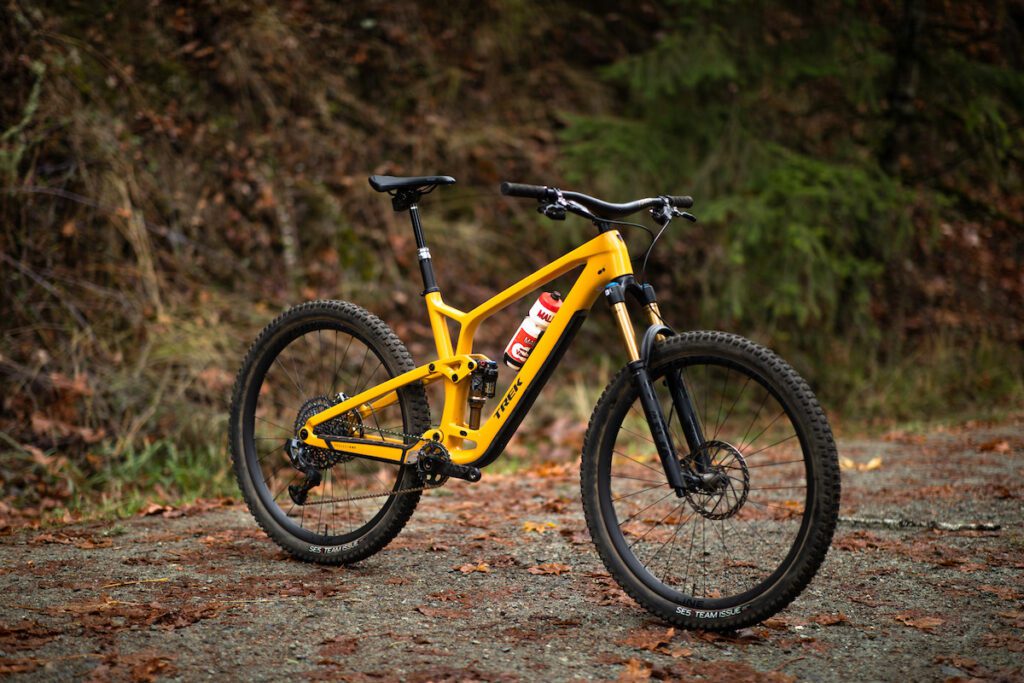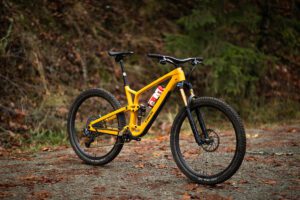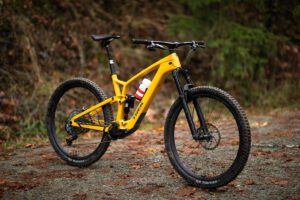A tale of two Treks: Fuel EX vs Fuel EXe
Comparing electric and traditional models of the same bike
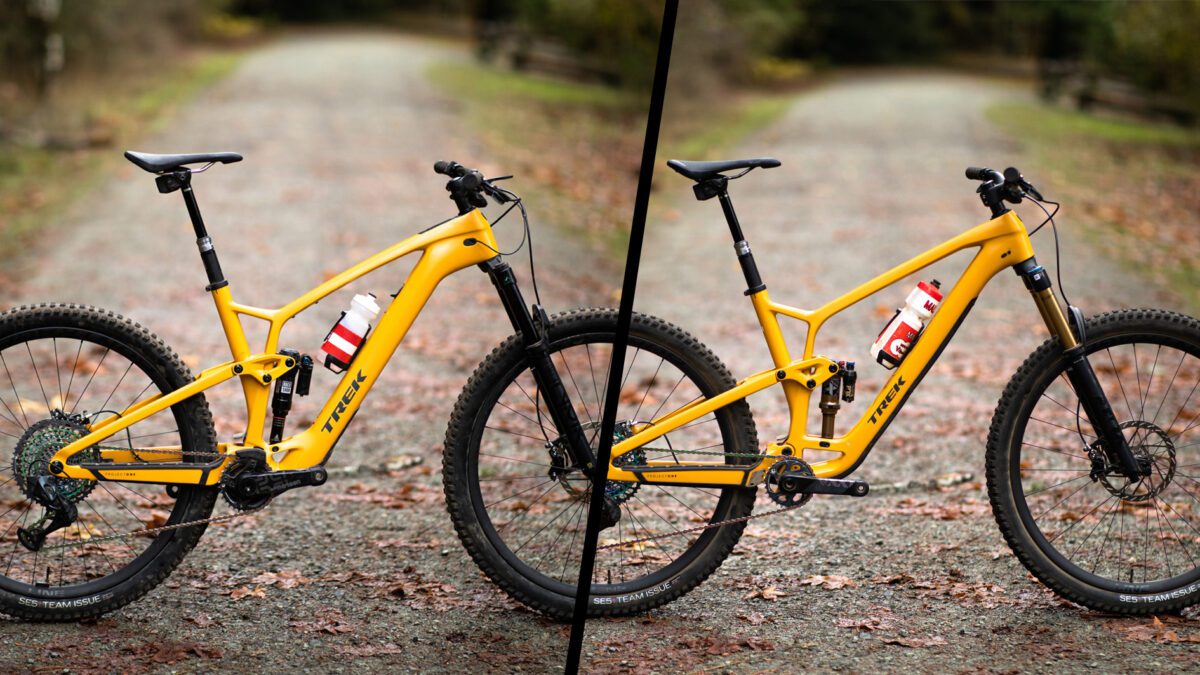 Photo by:
Nick Iwanyshyn
Photo by:
Nick Iwanyshyn
When Trek released the Fuel EXe and Fuel EX just weeks apart the similarities were obvious and intentional. The sixth generation of Trek’s Fuel EX looked much different than previous years. But it was almost identical to the look of Trek’s new lightweight eMTB, the Fuel EXe.
That the two bikes look so similar is a testament to what Trek achieved with EXe by using TQ’s new HP150 motor. Other than a slightly larger downtube on the EXe, it can be hard to tell the bikes apart at a glance.
RELATED: Long-term review: Trek Fuel EXe shifts the standard for eMTB
The similarities don’t stop at appearance, though. Trek wants the Fuel EXe to ride like its traditionally-powered partner, the EX. After several months of riding both brand-new Treks, we put the two bright yellow steeds head-to-head to see how they compare.
Trek Fuel EX vs Trek Fuel EXe
By the numbers: Trek Fuel EX vs. Trek Fuel EXe
While the two Treks look similar, down to the bright yellow colour, there are differences in the details that go beyond just the presence or absence of a motor. While both have Trek’s Mino Link, the Fuel EX has a storage compartment in the downtube and more adjustment, including the ability to adjust head angles with headset cups and suspension progression via a flip chip at the shock mount.
Here’s how the two Treks compare, by the numbers.
Trek Fuel EXe 9.9 xx1 AXS
Weight: 18.45 kg. (40.6 lbs)
Frame material: carbon fibre
Travel: 140mm rear, 150mm front
Motor: TQ HPR 50
Battery: 360 Wh battery
Geometry adjustments: Mino Link
Wheels: 29″ (with option to run 27.5″ rear wheel)
Sizes: S, M, L, XL
Price: $18,300
Trek Fuel EX 9.9 XX1 AXS (Gen 6)
Weight: 14.11kg (31.11lbs)
Frame material: carbon fibre
Travel: 140mm rear, 150mm front
Geometry adjustments: Mino Link, Head tube angle, suspension progression
Wheels: 27.5″ in XS-S, 29″ in S-XL (with option to run 27.5″ rear wheel)
Sizes: XS, S (27.5″), S (29″), M, M/L, L, XL
Price: $13,700
One last difference is frame material. Trek offers the Fuel EXe in six models, all with carbon fiber frames. The most affordable is the EXe 9.5, at $8,400. The Fuel EX, on the other hand, is available in carbon fiber and aluminum frames. There are eight Gen 6 Fuel EX builds, with the EX 7 coming in at just $4,400. So, while both top-end bikes are made of carbon fiber, there is a wider range of price points with the Fuel EX.
How do you want to Fuel your ride?
While there are other eMTB that share the same name as their pedal powered cousins, it is distinctive, if not unique, to have two bikes this close in design. Trek clearly wants the EXe riders to have as close to the analog experience as possible. With the help of TQ’s motor, the EXe gets closer to the feeling of analog than the vast majority of other e-mountain bikes.
For traditional riders thinking of going electric, the EXe offers an option that is familiar to what they already know. With the two bikes sharing the bulk of their design, it really is very easy to go back and forth between the two bikes. Owning both 9.9 models would be a fabulously expensive prospect but, for riders looking to own an eMTB and traditional bike, moving down the Fuel EX lines gets more affordable.
Trek has created two impressive bikes. Both are very capable, and very fun trail bikes to ride. While the TQ motor is light, removing it obviously makes the Fuel EX feel a bit more dynamic on the trail. The Fuel EXe, with motor, comes with the obvious advantage of more power. What stands out, though, is how close the bikes are to each other.
